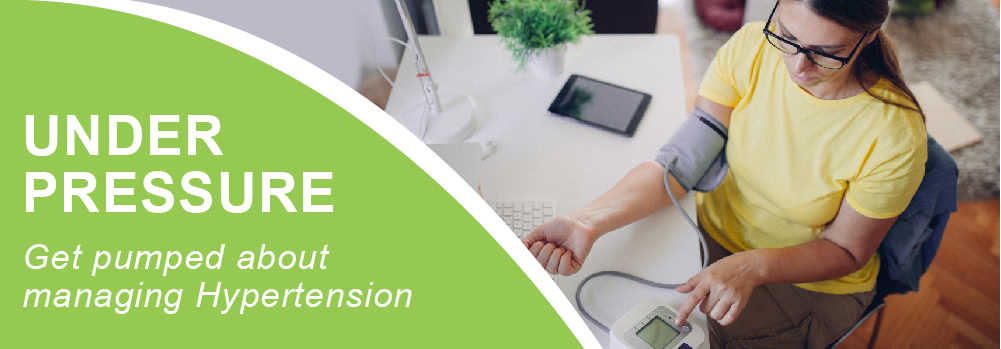
Get pumped about managing Hypertension!
Considering nearly half of adults in the United States have high blood pressure, it’s a term we hear frequently, but what is it exactly? High Blood Pressure or Hypertension is when the force of blood pushing against the walls of your arteries is consistently too high. When left untreated, hypertension puts you at risk for heart disease and stroke. It’s normal for our blood pressure to rise and fall throughout the day, but when it stays high for long periods of time your heart can be damaged leading to health problems or even death. The good news is, there several steps you can take to manage hypertension and live a healthy life!
Stop Smoking.
You should do this today. Smoking is harmful for many reasons and we encourage all patients who are smokers to quit immediately. It’s often easier said than done, so check with your provider for some strategies to ensure you quit smoking for good.
Exercise.
Physical activity strengthens your heart, and a stronger heart can pump more blood with less effort, thus decreasing the force on your arteries and lowering your blood pressure. For some patients, exercise lowered blood pressure enough to quit taking medication. Daily exercise can also prevent hypertension as you grow older. If you are implementing a new exercise routine, or starting to exercise for the first time, be sure to chat with your doctor before you begin.
Eat a Heart Healthy Diet.
In other words: put down the salt shaker! Incorporating the DASH Diet (Dietary Approaches to Stop Hypertension) into your daily life can have a big impact on not just hypertension, but your health overall.
DASH DIET:
- Eat more vegetables and fruit
- Eat less foods that are high in saturated fat, cholesterol and trans fats
- Eat more whole grains, fish, poultry and nuts
- East less sodium, sugar and red meats
The diet itself is pretty simple but following it can be a challenge. Try making small changes at first and ease your way into a new diet. Add a serving of vegetables at lunch and dinner, choose fruit, plain popcorn or low-fat yogurt as your afternoon snack, switch to low-fat dairy products, limit how much butter, salad dressing or other condiments you use, and if you don’t know already, learn to read food nutrition labels and choose low sodium foods.
Take Your Medications.
You may not be able to manage you high blood pressure with diet and exercise alone, but there are medications that can help you reach your blood pressure goal. Talk with your doctor about the right approach for you. They will know when it’s time to work medications into your routine. Once you are prescribed a medication for high blood pressure, it’s important to take it exactly as directed. If you are not able to follow your physician’s instructions, be sure to discuss your options at your next appointment. Don’t make changes to your treatment without guidance from your doctor.
Monitor Your Blood Pressure at Home.
Once you implement changes into your lifestyle, it’s important to monitor your blood pressure on a regular basis to understand if you are going in the right direction. If you have been diagnosed with high blood pressure, it’s important to check it daily to ensure your numbers are stable and staying in a safe zone. Check with your provider for best practices for measuring your blood pressure at home. They can also help you find the right fit when it comes to purchasing a cuff. Once you’re ready to go, use this helpful log to keep track of your numbers for the month.
